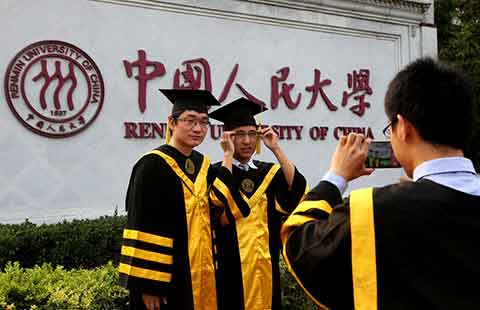China's not manipulating yuan
(China Daily) Updated: 2011-05-30 07:49WASHINGTON - The United States Treasury Department said on Friday in a report that China was not manipulating its currency.
"In China, since the authorities decided in June 2010 to allow the exchange rate to appreciate in response to market forces, the renminbi has appreciated by a total of 5.1 percent against the dollar in nominal terms through the end of April 2011, or at an annual pace of approximately 6 percent," said the semiannual report on international economic and exchange rate policies.
The Treasury said that as inflation in China is significantly higher than it is in the United States, the yuan has appreciated more rapidly against the dollar on a real, inflation-adjusted basis, at a rate of around 9 percent a year.
The appreciation of the yuan has been one of the core disputes between Washington and Beijing in recent years.
Washington wanted the Chinese yuan to appreciate faster in the hope of increasing US exports to China, thus reducing its overall trade deficit and increasing employment.
China, however, insisted that the enormous trade surplus with the US was largely caused by limitations on US high-tech exports to China. Many economists believe that the appreciation of the renminbi will do little to help US employment.
China has long said it would like to increase the flexibility of the Chinese currency, something that Beijing has been doing. Since 2005, the yuan has risen nearly 30 percent against the US dollar.
So far, the United States has avoided labeling China a currency manipulator.
"No major trading partners of the United States" met the standards identified by the Congress as a currency manipulator, the report concluded.
The Omnibus Trade and Competitiveness Act of 1988 requires the Treasury Secretary to provide reports on "whether countries manipulate the rate of exchange between their currency and the United States dollar for purposes of preventing effective balance of payments adjustments or gaining unfair competitive advantage in international trade".
With respect to exchange rate policies, 10 economies were reviewed in this report, accounting for nearly three quarters of US trade. Many of the economies have fully flexible exchange rates. A few have more tightly managed exchange rates, with varying degrees of management.
During the recent US-China Strategic and Economic Dialogue (S&ED), China stressed that it "will continue to promote renminbi exchange rate flexibility".
The US Treasury added that it will continue to "closely monitor" the pace of yuan appreciation.
The report meanwhile provided a general assessment of the US and world economy. "The US economy is recovering from its deepest recession in the post-war period," it said. "While recent growth is encouraging, the economy still faces significant challenges."
The number one challenge is still in the labor market. The US unemployment rate, currently at 9 percent, is not expected to fall significantly this year. The housing market and the long-term fiscal situation are "unsustainable", according to the report.
As for the world economy, the report noted: "The global economy recovered strongly in 2010, growing 5 percent compared with a contraction in output of 0.5 percent in 2009, according to the IMF."
The recovery pace across different economies, however, was uneven, with the advanced economies expanding by an estimated 3 percent and emerging markets and developing economies growing by 7.3 percent.
- Chinese company Hisense reaps benefits from Euro 2016 sponsorship
- Mercedes-AMG races ahead in China's auto market
- Commerce ministry urges G20 members to back trade facilitation agreement
- Govt expresses positive attitude on free trade agreement talks with the UK
- China's Huawei ranks 1st in brand power in Myanmar: report
- Chinese buyers agree AC Milan stake
- China's logistics sector gains momentum
- Taobao building platform to attract young high-tech innovators


















